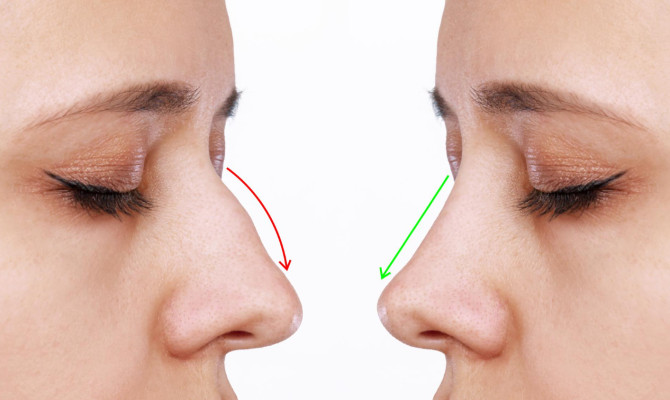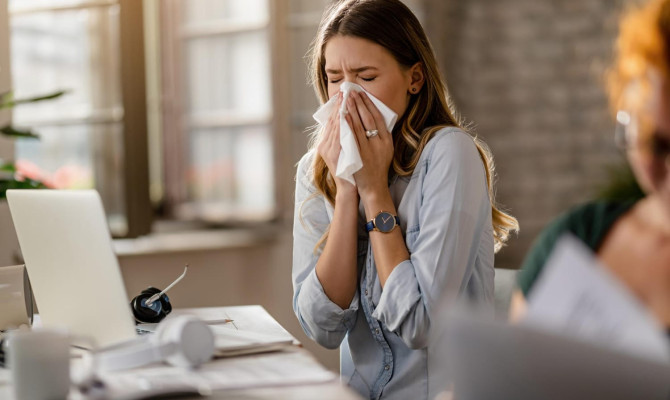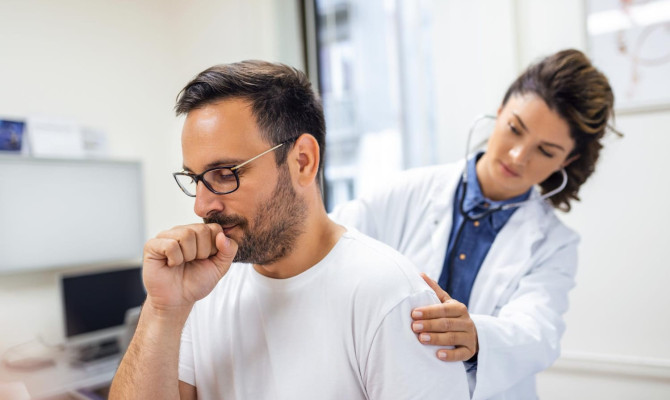Arthritis: Types and Management

- Arthritis
- 14 Aug 2023
Overview
What is Arthritis?
Arthritis is the pain and inflammation (the body’s natural immune response against injury) of bones, particularly the joints leading to restricted movement. The inflammation can be long-lasting and may even lead to tissue damage.

Symptoms
Symptoms of arthritis
- Soreness
- Inflammation
- Joint malformation
- Hotness of the affected area
- Firmness
- Protuberances (bulgy)
- Reddishness
- Delicate and fragile
- Restricted mobility
Causes
Causes of arthritis
There is no definite cause for all types of arthritis.
The probable reasons for most arthritis are as follows-
- The person may have a familial history of the disease
- He may be a sufferer of a specific viral infection or an autoimmune disease (a condition when the body cannot recognize between self-cells and non-self-cells)
- He may be a frequent football player or any other games which inflict strain on legs and joints
- He may have had an injury during his earlier life
- He may be a sufferer of irregular metabolism like calcium pyrophosphate deposition disease (accumulation of calcium pyrophosphate dehydrate around the joints)
- He may have an infection such as Lyme disease (caused by the bite of an infected tick insect carrying bacteria Borrelia burgdorferi)
Types
Types of arthritis
There are hundreds of types of arthritis prevailing among the patient population. Some of them are –
Rheumatoid arthritis
Rheumatoid arthritis is an autoimmune disorder in which the body cannot recognize its cells. It attacks them, causing inflammation of the body parts particularly joints
Rheumatoid arthritis also affects other vital body parts such as –
- Eyes
- Lungs
- Skin
- Heart
Rheumatoid arthritis causes
- Swelling
- Redness
- Can ultimately lead to fragile malformed bones and joints
Osteoarthritis
Osteoarthritis is the most widespread form of arthritis common among patients aged 50 years and above. Osteoarthritis is the disorder of
- Joints
- Cartilage
- Tendons
- Ligaments
- Bones
Osteoarthritis causes
- The whole collapse of cartilage
- Corrosion of ligaments and tendons
- Swelling and redness of the synovium (soft tissue lining the joints) of the joints
Juvenile arthritis
Juvenile arthritis is a disorder in children suffering from prolonged joint pains with inflammation of six months or longer. The body attacks its cells, causing joints to
- Harden
- Swollen
- Deformed
- Damaged
The symptoms of juvenile arthritis are moderate but, if untreated, can lead to severe malformation of joints. Moreover, children diagnosed with juvenile arthritis are more likely to have developed adult arthritis later in their life.
Ankylosing spondylitis
Ankylosing spondylitis is a form of arthritis affecting
- The spinal cord and causing inflammation
- It mainly swells the sacroiliac joints between the pelvis and the spine.
- The swelling slowly spreads to the joints of the vertebral column leading to a disease known as spondylitis
- The patient may feel the severe ache in their back and experience rigidness due to fusing the vertebral parts, causing ankylosis
- This Ankylosing spondylitis has a genetic link and may run generation after generation in families.
Psoriatic arthritis
Psoriatic arthritis is persistent arthritis occurring in people with skin psoriasis. Skin psoriasis is when the person develops red skin with silver patches. In psoriatic arthritis,
- There is swelling and redness of the enthesis connective tissue
- The fusion of tendons with the ligaments occurs
The tendon fusing leads to a condition known as enthesitis. The affected area of enthesitis is –
- Very tender
- Painful
- Spreads to nearby regions and within the joints
The patients often show symptoms of swollen fingers and toes, and generally, two fingers or toes are affected at a time. Psoriatic arthritis, if left untreated, can cause joint damage in later life.
Gout
Gout is inflammatory arthritis due to excess uric acid deposition (hyperuriemia) in the body. The uric acid causes
- Gouts
- Pain
- Swelling in the joints
This disease may infect people of all ages. Gout mainly affects the
- Large toe
- Ankle
- Foot
- Knee
- Elbow
- Wrist
Males are more prone to this disease earlier in life compared to females. Females are likely to develop gout only after the menopausal stage (i.e after 45 years of age) of life.
People with the following conditions have the increased risk of gout disease-
- Diabetes
- Hypertension
- Increased weight
- Heart disease
- Kidney problem 1Types of Arthritis | Researched based study from nih.gov
Treatment
Treatment of arthritis
The treatment of arthritis includes medications, living standard modification, and natural remedies.
Medicines for arthritis
Analgesics
- Analgesics are pain relievers that lessen the pain without causing any change in the swellings of the affected area. Some examples of analgesics are-Tramadol, and Acetaminophen.
Disease-modifying antirheumatic drugs (DMARDs)
- DMARDs controls inflammation and preserve the joints from further damage. Moreover it controls the autoimmune problem from creating further damage. Examples of some DMARDs are –Hydroxychloroquine and Methotrexate.
Nonsteroidal anti-inflammatory drugs (NSAIDs)
- Nonsteroidal anti-inflammatory drugs are the medicines to lessen inflammation, pain and body temperature in patients. Some of the commonly available NSAIDs are Naproxen sodium, Diclofenac, and Ibuprofen.
Corticosteroids
- Corticosteroids are drugs to treat arthritis which reduces swellings and controls the immune response in our body. Some commonly used corticosteroids are- Cortisone and Prednisone are
Biologics
- Biologics are the genetically modified drugs to target specific parts of the immune system. They are a type of nonsteroidal anti-inflammatory drugs and come in the form of injections. Some examples are-Infliximab and Etanercept.
Counterirritants
- Counterirritants are medicinal ointments that cause discomfort in one area to relieve pain and discomfort in another area. 2Management & treatment of Arthritis | Researched based study from nhs.uk
Lifestyle
Lifestyle modification to manage arthritis
Diet
A balanced diet containing all nutrients and vitamins in adequate amount is the key to defeat arthritis. Some foods known to keep healthy joints are mentioned below-
- Fruits and vegetables
- Fish
- Olive oil
- Beans and whole grains
- Nuts and seeds
People living with arthritis should solely avoid consuming
- Processed food
- Junk food
- Refined carbohydrates
- Added sugary foods
Moreover, smoking, and drinking should totally be avoided to lessen the burden of arthritis and prevent it from getting worse.
Physical therapy
Physical therapy may be of following types-
- Physiotherapy is an approach to treat ailing patients with arthritis. It may include any of the sessions to relief the pain depending upon the severity of the disease. This includes-
- Heat therapy is the application of heat to the affected area to increase blood flow to the area and reduce inflammation.
- Electrotherapy is the use of electric current to the painful affected area to inhibit the transfer of pain signals to the brain.
Physical tailored exercises
Physical tailored exercises are exercises recommended by the physiotherapist to help regain mobility. They generally suggest regularity and strict adherence to it depending on the need for fast results.
Manual massages
Physiotherapists provides Manual massages with hands to the affected area to relief the discomfort of the patients
Advices
Physiotherapists give advices to their patients regarding the dos and don’ts in their everyday life such as taking
- Correct diet
- Correct sitting postures, and
- Avoiding any heavy lifting to prevent the disease from getting worse.
- Occupational therapy gives advice to the patients and shows the alternative ways
- To do their everyday things either at home or outside independently and with less effort.
- It also gives advice on the right equipments they should use to prevent their joints or legs from further damage.
- Arthritis patients at the initial stage of developing symptoms should take some regular exercises on their own with friends and family such as-Walking,Cycling, and Swimming to prevent the disease from developing and thereby better their quality of life.
Remedies
Natural remedies for Arthritis management

- Ginger has remarkable antioxidant, anticancer and anti-inflammatory properties. Hence it can boost the body’s immunity and control inflammation in arthritis patients.
- Turmeric has compound called curcumin which contains anti –inflammatory properties good for arthritis patient.
- Chamomile is a tea containing anti–inflammatory properties and studies have found that drinking two cups on daily basis can reduce pain and inflammation.
- Boswellia is an herbal product known to have antioxidant and anti-inflammatory properties good for arthritis patients. It also helps in mobility in arthritis patients to some extent.
- Devils claw is an herbal extract having anti-inflammatory properties and reduces pain in arthritis patients.
However before using the herbal therapy, prior consultation with a doctor is always recommended.
When all the medicines, ointments, drugs, herbal therapy fail to give adequate relief or result to the patient surgery is recommended as the last resort.
Surgery
Surgeries in the management of arthritis
Surgery for arthritis may of the following types depending on the patient’s need. They are as follows-
- Osteotomy is the surgical procedure to reshape or to realign the bones to prevent it further damage.
- Joint fusion surgery is the surgical operation to remove damaged joints and fuse them with internal fixations. This is done for patients with unbearable joint pains.
- Total joint replacement is the surgical procedure in which damaged joints are removed with plastics or metals.
- Synovectomy is the surgical procedure to remove the synovial lining of the joint to relieve the unbearable pain.
Arthritis is a disease that needs to be managed at first on its own by doing regular exercise, taking balanced food, cycling, swimming, etc to avoid any untoward consequences in the future. Going for all other therapies available, to lessen the pain before surgery is always advisable.
Any feedback on this article?
 This Articles content was accurate
This Articles content was accurate Very Informative Article
Very Informative Article I have a question or a comment
I have a question or a comment
 This article contains inaccurate content
This article contains inaccurate content This article was not helpful
This article was not helpful I have a question or a comment
I have a question or a comment
We appreciate your helpful feedback!
Checkout our social pages
References
-
National Institutes of Health
Arthritis Versus Arthritis/Types
-
National Health Service
Rheumatoid arthritis - Treatment/Management






































